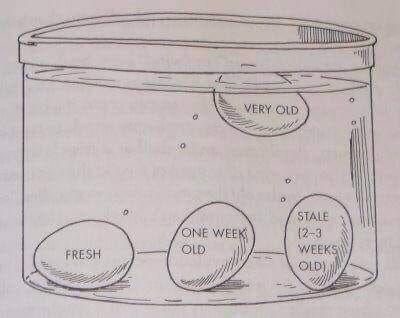Have you ever wondered if the eggs in your refrigerator are still fresh? The float test is a simple and reliable way to assess the freshness of eggs before using them in your culinary creations. In this article, we’ll guide you through the step-by-step process of performing a float test on eggs, helping you distinguish between the good and the bad with ease.

Why Perform a Float Test?
As eggs age, the air cell inside them gradually expands. By placing an egg in water, you can assess its freshness based on its buoyancy. This method is effective because fresh eggs have smaller air cells, while older eggs have larger air cells, making them more likely to float.
Performing the Float Test: Step-by-Step Guide
- Gather Your Materials: To perform the float test, you’ll need a bowl or container deep enough to hold water and a few eggs you want to check for freshness.
- Fill the Bowl with Water: Fill the bowl or container with enough water to fully submerge an egg. The water should be at room temperature.
- Carefully Place the Eggs: Gently place one egg at a time into the water. Observe its behavior to determine its freshness.
- Observe the Results:
- Fresh Egg (Sinks to the Bottom): If the egg sinks horizontally and rests at the bottom of the bowl, it is considered fresh. Fresh eggs have small air cells, indicating that they are relatively new.
- Less Fresh Egg (Sinks but Stands Upright): If the egg sinks but stands upright on one end at the bottom of the bowl, it is still safe to consume but not as fresh as a horizontally sinking egg. The air cell has slightly expanded over time.
- Old Egg (Floats on the Surface): If the egg floats on the surface of the water, it is no longer fresh and should be discarded. Older eggs have larger air cells, causing them to float.
- Inspect and Discard: After performing the float test on each egg, visually inspect them for any cracks, unusual odors, or signs of spoilage. Discard any eggs that show signs of damage or spoilage.
Additional Tips and Considerations
- Always wash your hands before handling eggs to maintain hygiene.
- It’s best to use the float test close to the date of purchase or when unsure about the eggs’ freshness.
- Remember that the float test provides a general indication of freshness but does not guarantee egg quality. Eggs that sink can still be past their prime, although less likely.
- If you’re unsure about an egg’s freshness after the float test, consider using alternative methods like the sniff test or cracking the egg into a separate container to inspect its appearance and odor.
Learn more about things farming related at Farming Genius! Click here
Conclusion: Cracking the Freshness Code
The float test is a valuable tool for determining the freshness of eggs in your kitchen. By assessing the eggs’ buoyancy in water, you can easily differentiate between fresh and older eggs, ensuring your culinary creations are made with the best ingredients. Remember, always practice proper food safety measures and discard any eggs that show signs of spoilage or damage. So, next time you’re in doubt, grab a bowl of water and let the float test reveal the freshness status of your eggs!
As an Amazon Associate we earn from qualifying purchases through some links in our articles.




